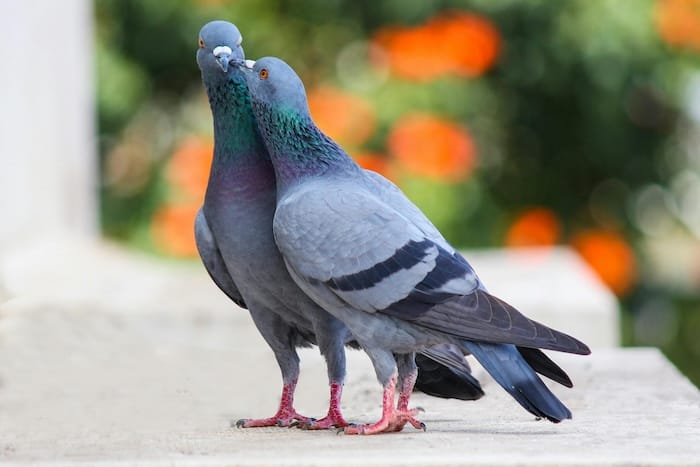Addressing the issue of pigeon overpopulation in urban environments requires a balanced approach that weighs both immediate and long-lasting impacts. Natural methods of pigeon deterrence focus on altering the environment to make it less hospitable to these birds, thus encouraging them to nest elsewhere. Such methods include using bird spikes, netting, and installing decoy predators. These strategies, while often requiring more time to be effective, promise a more sustainable solution and less harm to the ecosystem.

In contrast, chemical-based approaches yield quicker results but often pose greater environmental risks, including unintended effects on other wildlife and potential ecosystem contamination. Balancing efficacy with ecological responsibility is key when choosing how to manage pigeon populations. The long-term effects of each method vary, with natural techniques typically delivering gradual yet enduring solutions, while chemical methods may require ongoing application and pose continuity challenges in the management of pigeon presence.
Key Takeaways
- Environmental alteration methods offer sustainable pigeon control.
- Chemical approaches to pigeon management may pose environmental risks.
- The choice between control methods affects long-term ecosystem health.
Natural Pigeon Deterrent Methods
Employing natural methods to address a pigeon problem involves strategies that deter pigeons without harming them. These tactics capitalize on pigeons’ natural aversion to certain stimuli and environmental conditions.
Installation of Physical Barriers
One effective way to keep pigeons at bay is by installing physical barriers such as netting or spikes. Bird netting can be placed over spaces where pigeons commonly roost, such as eaves or ledges. Spikes prevent pigeons from landing and establishing roosting areas, reducing their presence.
Utilizing Scare Tactics and Predatory Signals
Pigeons have natural predators, and exploiting this fact can help in deterring them. Installing fake predators, like owl figures, or employing falconry are scare tactics that utilize predatory signals to frighten pigeons. Reflective objects, such as CDs or reflective tape, create light patterns that serve as effective deterrents.
Development and Maintenance of Unattractive Environment
Pigeons look for comfortable nesting areas with easy access to food and water. A robust strategy is the development and maintenance of an environment that lacks these amenities. This involves regular cleanliness, sealing garbage, and removing standing water sources. Limiting access to compost and other potential food sources is crucial.
Employment of Natural Repellents
Pigeons are sensitive to strong smells. Natural repellents like cinnamon, vinegar, or peppermint essential oil can create a scent barrier that pigeons find unpleasant. These substances can be applied around roosting areas, ledges, and places where pigeons are known to congregate.

Chemical and Industrial Pigeon Control Methods
Chemical and industrial strategies are widely used in urban areas to manage pigeon populations due to their immediate effectiveness and the ability to target specific locations. However, they raise health concerns and questions about environmental impact.
Use of Chemical Repellents and Poisons
Chemical methods for pigeon control include substances like bird-repellent gel and toxic baits. These gels are applied to structures, causing discomfort to pigeons’ feet, thus deterring them from perching or nesting. Toxic baits, like Avitrol, act as a frightening agent; pigeons that ingest it exhibit distress signals intended to scare away other pigeons. The toxicity of these baits can have unintended consequences, potentially harming non-target species and affecting the ecosystem.
Implementation of Pigeon Traps
Traps are an industrial method utilized by pest control specialists to capture pigeons in urban settings. They include live traps, which allow for capture and release, and other more permanent solutions. The effectiveness of traps can vary, and they often require regular maintenance. In some cases, pigeon traps provide a humane option for pigeon control, allowing birds to be relocated rather than harmed.
Effects and Regulation of Pigeon Population
To address pigeon overpopulation, control is employed as a means of population control. This birth control method gradually reduces pigeon numbers without immediate harm. However, regulations often govern chemical repellents and poisons because of potential health concerns and property damage. A balance between efficacy and safety is essential in pigeon control, and one should consider how to get rid of pigeons naturally to minimize negative outcomes.
Conclusion
In comparing long-term effects, natural pigeon control methods provide sustainable solutions that avoid potential ecological harm associated with chemical repellents. They foster an environment that discourages pigeons without introducing toxins into the ecosystem. In contrast, chemical methods, while potentially offering a quicker fix, carry the risk of unintended consequences, such as contamination and adverse effects on non-target species. Therefore, natural deterrents are favored for their alignment with environmental safety and balance.
